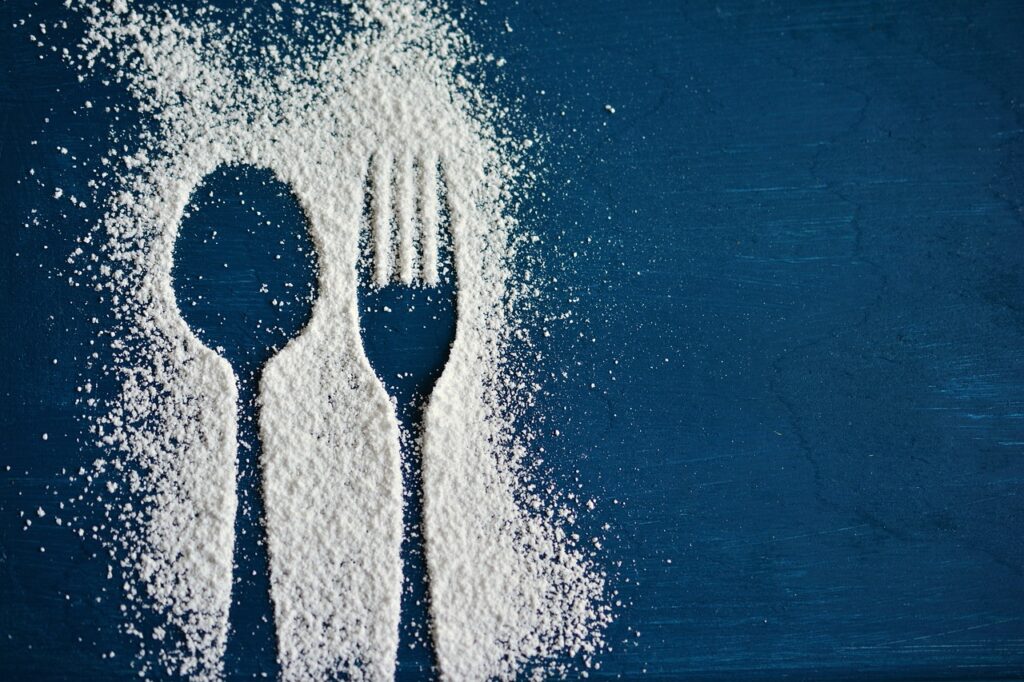Contact Us 720-964-1335 or 901-675-6125
Uncovering the Bitter Truth: How Sugar Worsens Fatty Liver Disease

Fatty liver disease, particularly nonalcoholic fatty liver disease (NAFLD) has become an increasing concern worldwide. It’s not just excessive alcohol use that causes this disorder, but sugar intake plays a significant role as well. In this article, we’ll highlight how sugar worsens fatty liver disease and explore a few practical ways to reduce sugar intake while still satisfying sweet cravings.
The Sugar and Fatty Liver Connection
Sugar is a carbohydrate that occurs naturally in many foods, such as fruits and vegetables. There are different types of sugars with varying molecules. Monosaccharides (one sugar molecule) include glucose, galactose (in milk), and fructose (common in fruits). Disaccharides or polysaccharides are sugars with two or more molecules, and they include sucrose (table sugar), lactose (in milk and dairy products), and starch. There are also highly processed forms of sugar and the most common of these types of sugar is high fructose corn syrup. When we consume more sugar than our bodies can process, the excess is converted into fat. The liver is an organ that stores this excess fat. Over time, liver cells are replaced by fat and this fat accumulation can lead to inflammation, oxidative stress and ultimately liver damage.
Additionally, as stated, sugar is a carbohydrate. Carbohydrates provide energy for the body. Once consumed, carbohydrates are broken down into glucose to enter the bloodstream, so the body can use it for energy right away or store for later use. Glucose is important in many body functions such as the brain, red blood cells, and central nervous system. Glucose in the blood is regulated by the pancreatic hormone insulin. Insulin helps glucose to enter body cells and it also helps with the storage of excess glucose in the liver. Insufficient or inefficient insulin levels make it hard for the liver to control glucose levels precipitating insulin resistance, speeding the process of diabetes development.
Reducing Sugar Intake
Reducing sugar intake is crucial for managing and preventing the progression of fatty liver disease. Here are some practical tips to help cut down on sugar consumption:
- Read labels: Be vigilant about reading food labels and avoid products with added sugars, especially those with high fructose corn syrup, glucose syrup, or any ingredient ending in “-ose.”
- Choose whole foods: Select whole, unprocessed foods like fruits, vegetables, lean proteins, and whole grains. These foods are naturally low in added sugars and provide essential nutrients to support overall health.
- Limit sugary beverages: Sugary beverages like soda, fruit juices, and energy drinks are major contributors to excessive sugar intake. Select water, herbal teas, or homemade fruit-infused water instead.
- Sweeten smartly: When sweetening foods or beverages, use natural alternatives like stevia, monk fruit, or erythritol, which have minimal impact on blood sugar levels.
- Practice mindful eating: Be mindful of portion sizes and savor the natural sweetness of whole foods rather than relying on sugary snacks or desserts.
Foods to Satisfy Sugar Cravings
Instead of reaching for sugary treats, try incorporating these delicious and nutritious alternatives into your diet:
- Fresh fruit: Nature’s candy, fruits like berries, apples, and oranges offer sweetness along with fiber, vitamins, and antioxidants.
- Dark chocolate: Select dark chocolate with a high cocoa content (70% or higher) as a satisfying and antioxidant-rich alternative to milk chocolate.
- Greek yogurt with berries: Enjoy a creamy and protein-packed treat by combining Greek yogurt with fresh berries and a drizzle of honey or a sprinkle of cinnamon.
- Homemade energy balls: Blend dates, nuts, and a hint of cocoa powder to create nutrient-dense energy balls that satisfy sweet cravings without added sugars.
Low-Sugar Recipes
Here are a few simple and delicious recipes to get you started on your low-sugar journey:
- Avocado Chocolate Mousse:
- 2 ripe avocados
- 1/4 cup unsweetened cocoa powder
- 1/4 cup almond milk
- 2-3 tablespoons maple syrup or sweetener of choice
- 1 teaspoon vanilla extract
Instructions: Blend all ingredients in a food processor until smooth and creamy. Serve chilled.
- Quinoa Fruit Salad:
- 1 cup cooked quinoa, cooled
- 1 cup mixed berries (strawberries, blueberries, raspberries)
- 1/2 cup diced mango
- 1/4 cup chopped mint leaves
- Juice of 1 lime
- Optional: drizzle of honey or maple syrup
Instructions: Combine all ingredients in a bowl and toss gently to mix. Adjust sweetness if desired and serve chilled.
- Zucchini Banana Bread:
- 2 ripe bananas, mashed
- 1/4 cup unsweetened applesauce
- 2 eggs
- 1 teaspoon vanilla extract
- 1 1/2 cups grated zucchini
- 1 1/2 cups whole wheat flour
- 1 teaspoon baking powder
- 1/2 teaspoon baking soda
- 1/2 teaspoon cinnamon
- Pinch of salt
Instructions: Preheat oven to 350°F (175°C) and grease a loaf pan. In a large bowl, combine mashed bananas, applesauce, eggs, and vanilla. Stir in grated zucchini. In another bowl, whisk together flour, baking powder, baking soda, cinnamon, and salt. Gradually add dry ingredients to wet ingredients and mix until well combined. Pour batter into the prepared loaf pan and bake for 50-60 minutes or until a toothpick inserted into the center comes out clean. Let cool before slicing and serving.
Conclusion
By understanding the detrimental effects of sugar on fatty liver disease and making conscious choices to reduce sugar intake, we can take significant steps towards improving liver health and overall well-being. With the abundance of delicious low-sugar alternatives and recipes available, satisfying sweet cravings while prioritizing health has never been easier. Make the switch today and reap the rewards of a sugar-conscious lifestyle. And remember you can always consult a healthcare provider for assistance.

